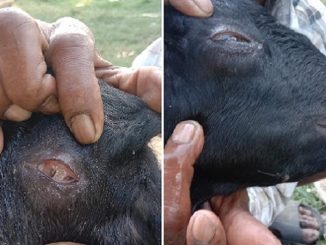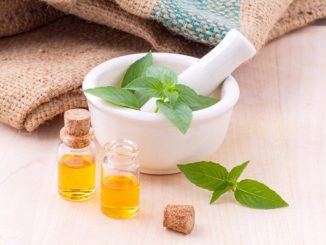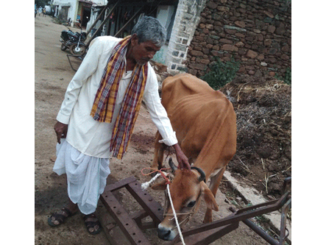Ethnobotanical practices have achieved immense significance for the last decade owing to the discovery of some effective medicinal plant products. The utilization of plants as a health medication for both humans and animals has not only been operative in the diseased condition but has also acted as a potential material for maintaining proper health. Plants hold the capacity to combat several types of diseases and most importantly, play the role of ethnoveterinary medicines.
The lack of knowledge on the social and economic benefits that could be gained from the industrial use of medicinal plants has been a major impediment to the growth of medicinal plant-based industries in developing countries. Except for the use of these plants for local health care, little knowledge about their market potential and market access has been available (Verma and Singh, 2008). As a result, governments and businesses have failed to realise the true potential of these plants. Every adult is familiar with a variety of “bush” medicines, though experience differs from person to person. Traditional awareness is typically weakened by modernization, according to anthropological convention. We review the effects of commercial occupation, consumerism, schooling, parenthood, age, and gender on the number of people who work in the retail industry. In bivariate studies, all six predictors are linked to bush professional care. Commercial occupation and consumerism are favourably correlated with herbal awareness, contrary to assumptions (Quinlan and Quinlan, 2007).

Indigenous communities play a significant and supportive role by disclosing traditional medicinal flora uses and thus serving as a tool to protect and preserve green diversity. In most nations, tribal healers teach local people how to make medicine from herbs to treat cut wounds, skin infection, swelling, ageing, mental illness, cancer, asthma, diabetes, jaundice, scabies, eczema, venereal diseases, snakebite, and gastric ulcer (Puspangadan and Atal, 1984; Perumal Samy and Ignacimuthu, 1998). India is the world’s largest producer of medicinal herbs and is also known as the world’s botanical garden. The majority of practitioners in Indian medicinal systems devise and dispense their own recipes, necessitating thorough documentation and study. In rural India, 70 percent of the population relies on the conventional medical system. Herbal medicine practitioners are increasingly increasing in the Western world, with nearly 40% of the population using herbs to cure diseases (Bent and Ko, 2004).
The medicinal plant market is currently unorganised all over the world. Pharmaceutical companies are to blame for inefficient, imperfect, informal, and opportunistic medicinal plant marketing. The herbal drug trade is massive, unregulated, and unregulated. Adulteration is widespread in wild plants that thrive in the absence of government oversight. The export of herbal products is hampered by a lack of toxicological tests and quality control. Following WWII, these pharmaceutical companies were less interested in plant sources of novel drugs, and it was widely assumed and predicted that the majority of novel drugs and natural constituents would be generated by chemical synthesis. As the low cost effective indices of pharmaceutical companies have discovered, drug production is a complex, costly, and time-consuming operation. Due to a lack of financial resources, high-quality screening in medicinal plant research in academic institutes is not possible. Thousands of medicinal plants have not been chemically studied, and a large number of isolated phytoconstituents have not been screened for systematic biological and clinical evaluation (Ali, 2009).
The past 200 years have witnessed that there is acceleration in the rate of extinction of plants and animal species but also the erosion of traditional knowledge related to medicinal properties of plants. The ethnobotanical experience which passed on from generation to generation is rapidly being lost with the modernization of society, development of communication system, the migration of people from villages to cities and accessibility of modern medicine (Ali, 2009). It is essential to grow medicinal plants on unused land or as an intercrop with other plants due to the overall lower trade of herbal drugs and higher vulnerability rate. The protection would aid in the preservation of medicinal plant resources, as well as the preservation of endangered or extinct plants. The lack of scientific and clinical evidence, as well as a clearer understanding of the effectiveness and protection of herbal products, is a major impediment to the incorporation of herbal medicine into modern medical practises. Standardization is critical for ensuring the consistency and protection of herbal products. Validation of medicinal significance on the basis of clinical trials and isolation of potent components of the folklore herbal drugs are challenges before the researchers all over the world.
References
- Ali M (2009) Present status of herbal medicines in India Journal of herbal medicine and toxicology3(2):1-7.
- Bent S, Ko R (2004) Commonly used herbal medicines in the United States: a review The American journal of medicine116(7):478-485.
- Perumal Samy R, Ignacimuthu S (1998) Screening of 34 Indian medicinal plants for antibacterial properties Ethnopharmacol 62:173-182.
- Puspangadan P, Atal CK (1984) Ethnomedico-botanical investigation in Kerala I. Some primitive tribals of Western Ghats and their herbal medicine Ethnopharmacol. 11:59-77.
- Quinlan MB, Quinlan RJ (2007) Modernization and medicinal plant knowledge in a Caribbean horticultural village Medical Anthropology Quarterly21(2):169-192.
- Verma S, Singh SP (2008) Current and future status of herbal medicines. Veterinary world1(11):347.
| The content of the articles are accurate and true to the best of the author’s knowledge. It is not meant to substitute for diagnosis, prognosis, treatment, prescription, or formal and individualized advice from a veterinary medical professional. Animals exhibiting signs and symptoms of distress should be seen by a veterinarian immediately. |






Be the first to comment